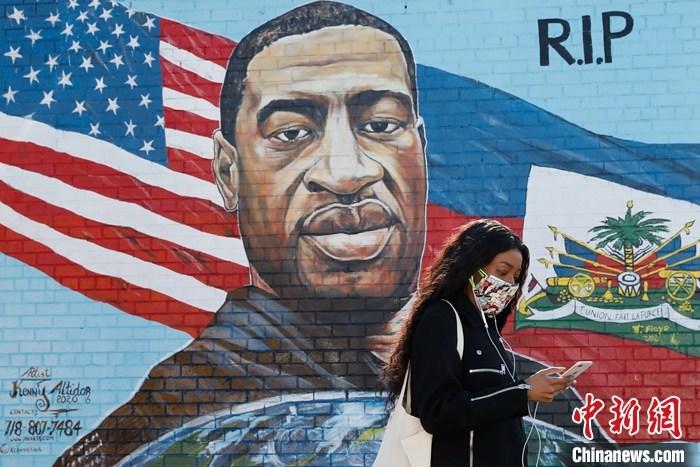Bryant, a 16-year-old African-American girl from Columbus, Ohio, was shot and killed by police on April 20, local time. Bryant’s funeral was held in Columbus on April 30, local time. On the same day, her family again expressed their anger at Bryant’s fatal police shooting and condemned violent law enforcement and racial discrimination by the U.S. police.
A 16-year-old African-American girl was shot dead by police
Bryant’s family, friends and school teachers were among those who attended the funeral. Bryant’s family said they were saddened and outraged by What happened to him.
In response, local police said Bryant was attacking people with a knife when officers opened fire, but Bryant’s family said she was acting in self-defense with a knife and accused the officers of shooting in a hurry “without warning.” The incident sparked an outcry on the ground. At present, the investigation into the incident is continuing.
Protests continue over the shooting death of Brown, an African-American man, by police
Andrew Brown, an African-American man from Elizabeth, North Carolina, has been the focus of much media attention in the United States after he was shot multiple times by police. After the incident, the city of Elizabeth held several days of protests.
On April 30, local time, CCTV reporters visited the scene of the shooting, nearby residents said that such incidents occur repeatedly because of the long-standing inequalities in American society and systemic racism in the judicial system.
CCTV reporter Xu Wei: This is the scene of the shooting of Andrew Brown, an African-American man from North Carolina. On the day of the incident, when police were searching Brown’s house, Brown suddenly ran into his car and tried to escape, and police shot him dead, the incident occurred on the second day of Freud’s sentencing.
After the incident, according to an independent autopsy report released by Brown’s family, Brown had five gunshot wounds to his body, including a fatal shot in the head. In response, Brown’s family repeatedly asked the police to release the law enforcement recorder video, but the police gave only 20 seconds of video, the police practice caused days of protests in the local area.
The North Carolina Superior Court ruled that Brown’s immediate family and family lawyers were allowed to see the full video for 10 days, a ruling that has now been issued for three days, but it remains unclear when Brown’s family will see the full law enforcement video.
In memory of Brown, who was shot dead by police, locals spontaneously placed flowers and candles at the scene of the shooting.
It is understood that after the incident, police said they were carrying out law enforcement operations, the shooting was because Brown tried to escape.
But according to Brown’s family, they were told police had not found any drugs or weapons in Brown’s home or car. The contraband did not exist, but Brown, who had been shot five times, was killed. What’s even harder for Brown’s family is that 10 days have passed and they haven’t seen the full law enforcement video.
Brown, who died in police violence, seemed to remind people once again that the “Freudian tragedy” would not come to an end with a verdict. Now, local residents are turning Brown’s home into a memorial to remind people that such tragedies will persist in the United States.
Local resident Ulysses Edwards: “It’s like a memorial, a reminder of what happens all the time in this country and in our communities.”
Ulysses Edwards says violent police enforcement incidents are common in the United States precisely because of persistent inequality in American society and systemic racism in the U.S. justice system. Because these incidents tend to occur in low-income communities, they tend to target low-income people of color.
Local time on April 30, Brown was shot dead by police in the local protests continue, local law enforcement has been arrested in recent days a number of protesters. On the same day, the City of Elizabeth announced that all protests required an advance permit, which, according to the regulations, must be submitted to the relevant authorities “no less than 15 days prior to the date of the proposed public meeting.” This suggests that within the next two weeks, any protest will be considered illegal by local law enforcement.
There were several shootings on the same day, and the victims included children
On April 29, local time, there were several shootings in Yonkers, N.Y., among the victims, including children, teenagers and police.
Two groups of minors exchanged gunfire and bullets hit the 6-year-old
On the evening of April 29, local time, a gunfight broke out between two groups of youths under the age of 18 in Yonkers, N.Y., during which a bullet accidentally hit a 6-year-old child playing in his front yard. The injured child was taken to hospital in a stable condition. Police have arrested three youths involved.
A student was shot on his way out of school and died
There was also a shooting in Brooklyn, New York, on April 29. According to local officials, the victim was on his way back to the scientist when he was shot and rushed to hospital, but died on April 30, local time. So far, the police have not identified the killer.
A police officer was shot and wounded, and the suspect was shot dead by police
On the same day, a police officer was shot and wounded in a shooting in St. Peters, Missouri. According to reports, the suspect was asked by the police to stop for inspection while driving the vehicle, during which the suspect suddenly shot one of the officers and immediately fled by car. The police who came to support then chased the suspect’s house, and during the standoff the suspect fled again in a car, eventually killing him during the chase.



